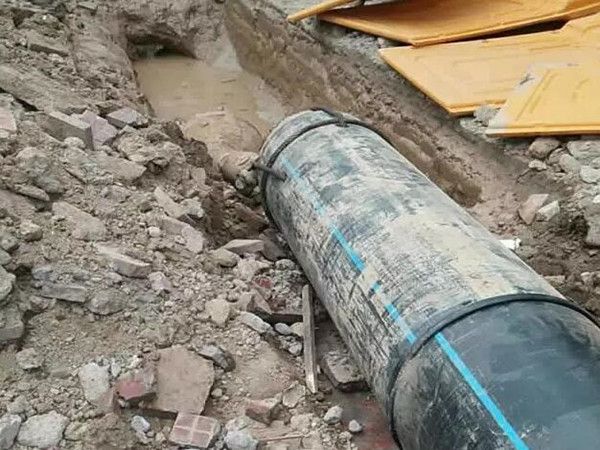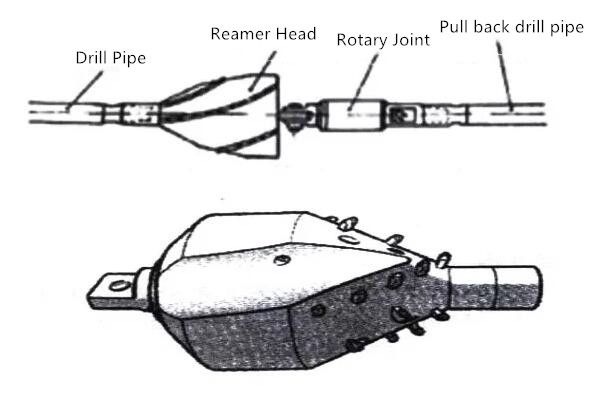PE Trenchless Pipe Jacking
Trenchless is a term frequently used in recent years, refers to the use of less excavation or no excavation technology to lay or replace underground pipelines, pipe jacking diameter can reach DN800 or more. The pipe to be jacked is jacked into the receiving well through the working well. The pipe in a working well can travel more than 1500 meters underground, and can also travel in a curve to bypass some underground pipelines or obstacles. The key point of the technology is to correct the deviation of the pipe extension in the underground. It is especially suitable for trenchless laying of large and medium pipe diameter. This technology can also be called PE pipe jacking construction, also known as pipe drawing process. The PE pipe with hot-melt connection is used as the pipe material, which is safe and fast, and can effectively shorten the construction period. The advantages of this technology are: no ground excavation; No impact on traffic, no demolition, no damage to ground buildings; Do not damage the environment; It does not affect the segment difference deformation of the pipeline; Time saving, high efficiency, safety and low comprehensive cost.
Next, madisonpipe introduces the relevant construction technology of trenchless pipe jacking.
Pipe jacking construction is to overcome the friction between the pipeline and the surrounding soil by means of jacking force generated by jacking equipment in the working pit, push the pipeline into the soil according to the designed slope, and transport the earthwork away. After one section of pipe is jacked into the soil, the next section of pipe will continue to be jacked. The principle is to push the tool pipe or roadheader from the working pit through the soil layer to the receiving pit by means of the thrust between the main roof oil cylinder and pipelines and relay room. The pipe is buried between two pits immediately after the tool pipe or roadheader.
PE Pipe Jacking Construction Preparation
1. Head selection
according to the geological report and combined with the construction experience, the pipe jacking head decided to adopt the air pressure balance grid (water flushing) head for construction.
In the process of jacking, the nose is stabilized by air pressure to balance the front earth pressure, so as to reduce the influence of external soil on the surrounding ground.

2. Jacking Equipment and Technology
(1)Main roof
Four 200t / set jacks are used as the main roof, and the stroke of the jacks is 1.4m. The power of Jack is provided by oil pump. At the back end of the jack, the reaction force is evenly acted on the working well by the log and pressure ring. At the front end, the pressure ring is pushed in, and the jacking iron transmits the jacking force to the pipe joint. The pressure dividing ring has enough rigidity, and the contact with the end face of the pipe is relatively flat without deformation.
(2)Relay room
In the process of long-distance jacking, when the jacking resistance exceeds the total allowable jacking force and the jacking distance cannot be reached at one time, the relay room section relay jacking must be set. When the jacking length of the pipe jacking project exceeds 100 meters, it is considered to set up a relay room behind the machine head and adopt thixotropic slurry grouting technology.
The relay room is composed of a front housing, a jack and a rear housing. The front shell is connected with the front connecting pipe, the rear shell is connected with the rear connecting pipe, and the front and rear shells are socket connected. The two shells are sealed by rubber waterstop to prevent water and slurry from flowing into the pipeline.
Each relay room is equipped with 10 jacks with a jacking force of 30 tons. The jacks are evenly arranged along the circumference.
The stroke of the jack is 28cm, which is fixed on the front housing with fasteners made of flat iron. The steel shell structure is finished to ensure no deformation during use. The outer diameter of the shell in the relay room is the same as that of the pipe joint, which can reduce soil disturbance, ground settlement and jacking resistance. After the pipe is pushed through, the jack and various accessories shall be removed, and the gap between the shell and the inner wall of the pipe joint shall be filled with fine aggregate concrete.

(3)Interface
Pipe joint interface is mainly composed of outer ring (steel ring) rubber waterstop and soft soil liner.
The steel collar shall not be deformed and the joint shall not be damaged during the transportation and hoisting process from the processing place to the site, so as to ensure that the rubber belt will not shift and turn over during the butt joint process of the pipe joint, and ensure the tightness of the pipe joint. At the same time, the steel ring sleeve must be treated with anti-corrosion treatment before entering the site. The rubber waterstop shall be kept clean and free from oil stain and stored in a dark place to prevent aging.
During the construction, the rubber waterstop is pasted on the groove of the concrete pipe mouth with strong glue and pasted firmly. Before the butt joint of the pipe joint, non corrosive lubricating oil is applied to reduce the friction and prevent the waterstop from turning over, shifting and breaking.
The cork liner is made of multi-layer plywood (about 1cm in thickness), which is sandwiched between the steel rings of the front and rear pipe joints, so as to uniform the interaction force between the pipe joints and reduce the damage of the joint.
After the pipe is jacked, the inner joint of the pipe shall be treated. The plywood between the pipe joints shall be chiseled to the same depth (the depth is 2-3cm), and leveled with asphalt elastic caulking paste or cement mortar.
(4)Grouting technology
In the process of long-distance (more than 100 meters) PE trenchless pipe jacking, the grouting technology must be adopted. The thixotropic slurry sleeve is used to reduce the friction between the pipe wall and the soil during the jacking process, and the lost soil is filled to reduce soil deformation, settlement and water resistance. Thixotropic mud is made by mixing bentonite and water with a mix ratio of 1:8. The thixotropic slurry is mixed and stored in the slurry storage box, and then transported to the grouting hole of concrete pipe by the grouting machine through the pipe, and injected into the soil to form a slurry sleeve.